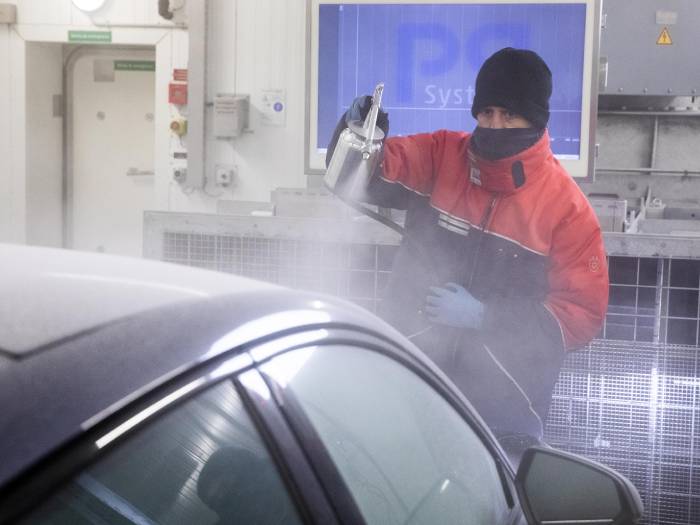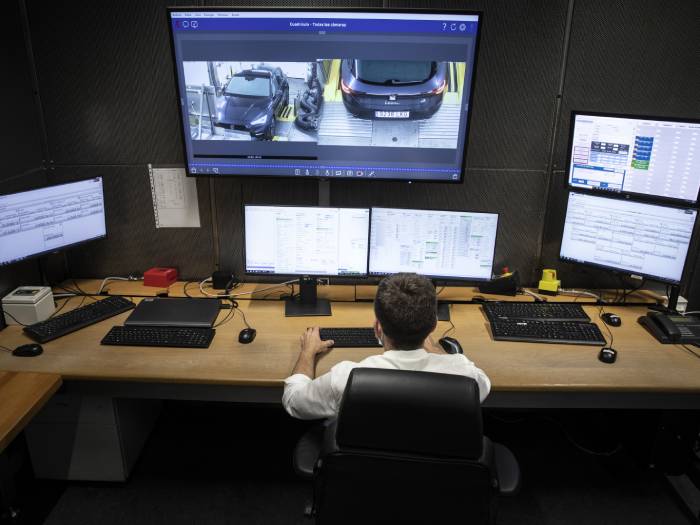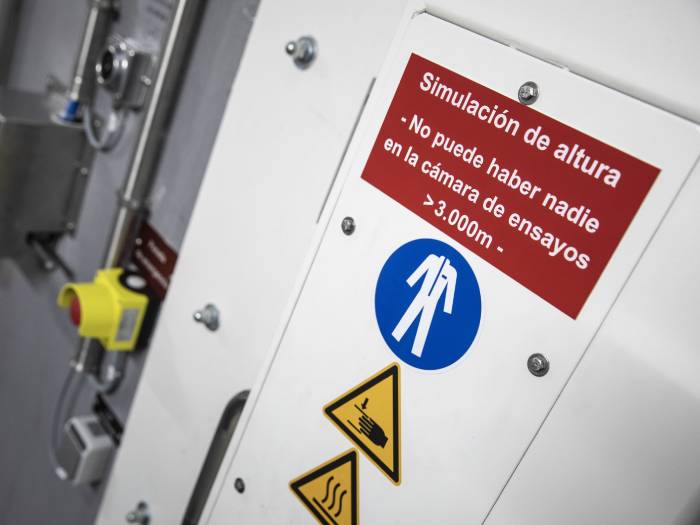Testing SEAT electric motors: efficiency even in extreme conditions
Alpine cold, desert heat and high altitudes: SEAT’s electric and hybrid vehicles are tested to ensure they can cope with the toughest conditions. All this without leaving the Martorell Technical Centre, thanks to its dedicated climatic chambers.
SEAT’s electric and hybrid engines must guarantee the highest levels of operating efficiency under all conditions of use. For this reason, they are tested in extreme situations in one of the most cutting-edge test centres in the whole of Europe.
Extreme changes in weather conditions are simulated here, travelling from the top of Mont Blanc to the Sahara desert via Antarctica, all without going more than a few metres. This is made possible by the climatic chambers at the Martorell Technical Centre, where it is possible to go from the most extreme heat to temperatures that freeze water in a few milliseconds.
Breaking the ice

Engineer Vicente Sancho, a specialist at the SEAT Powertrain Development Centre, prepares to test how the SEAT Leon e-HYBRID’s engine reacts: he puts on a thermal jacket, hiking boots, gloves and a woolly hat. And no wonder, as he is about to enter a room where temperatures can go down to -40° C. “We want to see how long it takes for an electric motor to defrost a completely icy windscreen,” he says.
The car has been acclimatising inside the chamber for about ten hours, before being sprayed with water, which has turned into ice. When the air conditioning is switched on, within just 20 minutes the solid layer of ice on the windscreen has completely melted. Obviously, before concluding this specific test, the technicians at the Powertrain Development Centre check that all the components work perfectly at that temperature.
Heat tolerance

In the adjacent room, the situation is completely different: light panels generate the same intensity that you’d find in the desert sun, with giant fans to move the hot air around until the room reaches 60° C. Naturally, this room also requires a change of clothing, but the most important thing is to protect your eyes with safety goggles.
“This kind of test is necessary to check the endurance of all the components in extreme heat. You don’t have to live in the middle of the desert for a car to be subjected to temperatures of above 50°. It’s also important to verify the car’s ability to withstand ultraviolet rays, and thus guarantee the quality of both paint and other elements,” Sancho adds.
Dealing with high altitudes

As well as heat and cold, altitude tests are also key. “Some drivers may not consider going to 5,000 metres with their SEAT, but it’s inevitable in countries like Mexico, where the brand has a strong presence,” Sancho continues.
To drive the cars in the chamber simulating these altitudes, the members of the team had to undergo a special medical check-up, and in any case cannot exceed the equivalent of 3,000 metres above sea level. When it is necessary to perform tests at even higher altitudes, technology comes into play and a robot takes over from the engineers. The robot receives commands from a simulator outside the room, and can thus drive the car to the top of Mont Blanc without a hitch, of course without actually leaving Martorell.
Multi-energy test benches
The SEAT Powertrain Development Centre in Martorell also has nine multi-energy test benches that enable any type of engine or motor to be tested, from the development phase to its certification. They operate 24 hours a day and carry out more than 14,000 tests every year with a focus on electrification.
“The new facilities and the strong technical capacity of the teams allow new hybrid and electric motors to be calibrated to ensure optimum performance” concludes Werner Tietz, SEAT S.A. Vice President for R&D.
Source: SEAT S.A.
